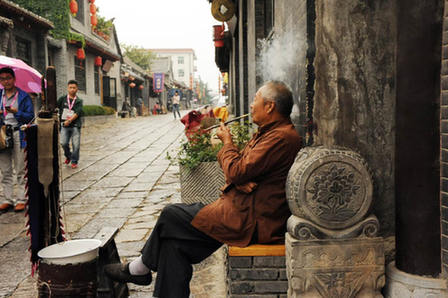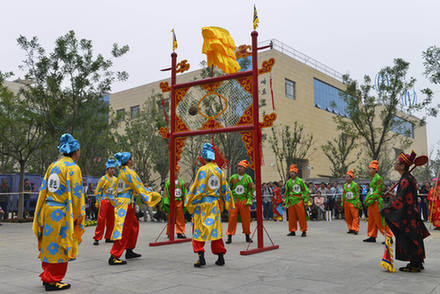Shandong’s Legacy
Wang Changwei, vice director of the management committee of the Penglai City tourist resort, spoke of how Penglai has actively promoted characteristic culture tourism and extended its industrial chain, prompting the local tourist industry to realize a mixed model of development. By 2013, there had been 6.02 million tourist visits to Penglai, bringing in an overall revenue of RMB 6.1 billion, 33.9 percent of the tertiary industry’s added value.
“So far, the layout of the old city area of Penglai has been well-preserved. During its renovation and construction we paid great attention to preserving tradition and the original culture without large-scale demolition or reconstruction; the old architectural relics have been well protected and enriched with optimized greening projects and scenic spots. Protection of the old and development of the new are well balanced,” said Hou Xinghua, vice director of the planning department at the Penglai municipal bureau of housing, planning and construction.
Faithful to the Past
On September 18, I visited the area around Chaoyang Street in Yantai City, where I saw many old constructions with distinctive characteristics skirting the mountains and sea. The area used to house the consulates of 17 countries. Nowadays, it is the cradle of Yantai’s modern manufacturing industry, witnessing over 150 years of history since the city opened as a commercial port. According to Xu Mingjiang, vice director of the archeology department of Yantai Museum, Chaoyang Street was first constructed in 1872 and is a typical example of Yantai port culture. “This was a busy commercial street, full of stores, foreign firms and post offices in constructions with both Chinese and foreign characteristics,” said Xu.
Zhang Weigong, director of the rural planning department of Yantai Planning Bureau, emphasized that the preservation of historical and cultural cities doesn’t only refer to the protection of ancient architecture and cultural relics. Many elements constitute the historical and cultural environment of Yantai, such as traditional residential houses, modern constructions, view corridors and ancient and rare trees. “Therefore, the newly built residential constructions in the historical and cultural preservation area should be coordinated with the existing ancient constructions in terms of height, color and signage,” Zhang said.
Qingdao, which is famous for the image of red-tile roofs, green trees, blue sea and an azure sky, was designated a national historical and cultural city by the State Council in January 1994. With just over 100 years of history, Qingdao is young. However, due to its special historical background, its old urban area consists of many European-style constructions.
Moreover, the beautiful natural environment – the combination of sea and mountain views and the imposing style of its urban planning – gives Qingdao its distinctive architectural culture.
The Ba Da Guan (literally, the eight great passes) district in Qingdao, featuring clusters of historical mansions, is a typical example of the construction culture of Qingdao. The area has 320-odd old houses and was designated a major historical and cultural site affording national protection by the State Council in June 2001. In 1897 after Germany occupied Jiaozhou Bay, houses in the style of 20-odd countries, such as Russia, Britain, France, Germany, America, Japan, Denmark, Greece and Spain, were built in Ba Da Guan, earning it the reputation as the “Architectural Expo of All Nations.”
Days gone by are vividly evoked along Beimenli Ancient Street. Xu Hao


